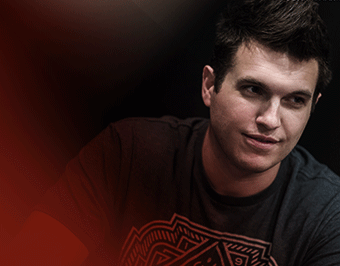How to Become a Poker Pro | 3 Concepts Every Pro Needs
Poker No Longer an EZ Game
Following the Poker Boom, some patience and a little knowledge went a long way towards making a successful player. Now you need more advanced tools in your arsenal if you want to win consistently.
How To Become an Aspiring Pro Poker Player
Be Like the Cool Kids – Overbet!
What is an Overbet?
An overbet is a bet larger than the size of the pot. For example, betting $25 into a pot of $15.
Should You Overbet?
Overbetting, when done correctly, can be extremely profitable. It requires both strong hand-reading ability and attention to player tendencies. If you have trouble with either, you’re not ready for the overbet.
Overbetting Comes With Risk
When overbetting, you’re risking more chips than normal and should you act incorrectly, it will cost you. It’s important that you have a plan to overbet in order to minimize risk.
Overbetting for Value
Overbetting is a great way to extract money from inexperienced players but it can also be used to extract maximum value when you have a monster. Excellent overbetting spots are where your opponent either has medium strength hands or air.
Overbetting for Value – Experienced opponents.
Against experienced opponents, an overbet can help you extract max chips with big hands. For example, let’s say the flop falls Ac-10h-6h and a third heart hits the river.
Your opponent will probably expect you to bet no more than half the size of the pot to try and extract value. When you overbet here, it makes them think that perhaps their weak ace may be good and that you’re trying to buy the pot.
Overbetting for Value – Weaker Opponents
Weaker or inexperienced opponents aren’t going to be thinking too deeply about the meaning of a particular bet size. They are more focused on their own hand and are more likely to pay off an overbet when you have the goods.
They will be less likely to call with air, but could call down with hands as weak as top pair with air.
Overbetting as a Bluff
You must understand the mindset and tendencies of your opponent to overbet bluff effectively. Wet boards and situations where a player may have a vulnerable holding are solid spots for an overbet bluff.
Overbetting as a Bluff – When to Avoid
Two big spots where you will want to avoid an over bluff bet is against calling stations and short stacks in a tournament.
Against calling stations overbets for value are more effective because they are going to call down with a wide variety of hands. Yes, they may even call down shoves with something as weak as top pair, top kicker.
Also, tend to avoid the overbet bluff against short stacks in tournaments. They are often looking for a spot to get their chips in and are more willing to put them in with a lesser hand. While they probably should have shoved pre-flop, some short stack prefer shoving on the flop or later when they at least have a pair, overcards to the board or a big draw.

Extracting Maximum Value With Strong Hands Out of Position
The OOP Dilemma
When you flop a made hand out of position, you’re going to be faced with a dilemma of whether to check-call or check-raise on both the flop and turn. With little information, you don’t want to scare them out of the pot. What Are Your Opponent’s Tendencies?
Having a strong read on your opponent will benefit you in this spot. Are they likely to bet the turn and not the river or are they going to fire on every street?
Check-raise Until They Stop Betting
Upswing coach Ryan Fee recommends you check-raise your opponent up to the street they’ll quit betting. If they are going to bet all streets, simply call.
Consider Modifying for Nits and Weak Players
You may need to modify this approach against nits and weak players. For example, you let’s say you called a raise from with Q-J OOP and the flop falls A-K-10. You check into a nit who bets out and you follow with a check-raise.
In this spot, it is likely that they are going to check behind you on the turn unless they have something like a set or have also flopped Broadway. For tight players, you may have to check-raise the flop and then bet the turn and river to extract max value.
Countering Tiny Donk-Bets
What to Look For
Recreational players have a habit of placing tiny bets on the flop. They believe that they are taking control of the betting and being crafty with their small bets. For example, a player min-bets $2 into a pot of $15 on the flop.
Consider a Tiny Bet a Check
Upswing coach Ryan Fee gives a simple strategy for combating these micro-bets from recreational players – treat it as a check. From a recreational player, a tiny bet is a strong sign of weakness or a player trying to catch a draw. Ignore their tiny bet and play the hand as if they had checked.
Watch Donk Bets from Better Players
On occasion you’ll run across a better player that start to employ a donk bet strategy. This is usually because they have spotted weakness at the table that they hope to exploit.
A great example would be an experienced player min-betting into a $15 pot on a wet board. If you treat it as a check and raise, they may follow through with a sizable three-bet
Adversely, they may employ a donk bet to try and see where you’re at in the hand to try and further define your range. Either event, tread carefully with donk bets from experienced players.
